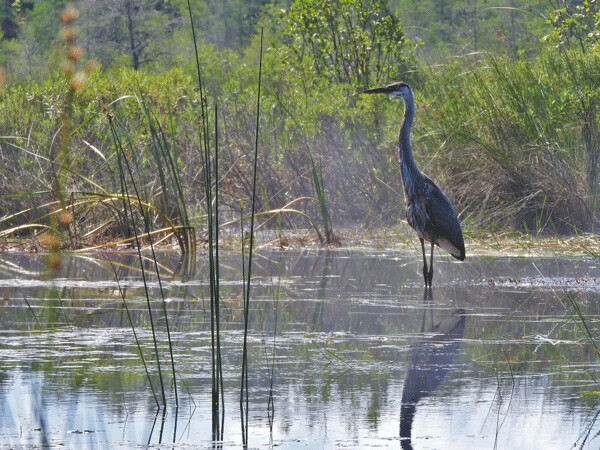News & Articles
Browse all content by date.


Did you know that a grasshopper chews by moving her mandibles from side to side instead of up and down?
I’d never really thought anything about how a grasshopper chews until reading Mary Oliver’s poem “The Summer Day.” One of her most quoted poems, it ends with the question: “Tell me, what is it you plan to do with your one wild and precious life?” The little jolt of surprise and joy that crackled through me at the novelty of learning about nature through a poem, coupled with such an exciting and affirming question, solidly locked in my love for Mary Oliver’s poetry.
It was a ranger in Yosemite National Park who first gave me her name. I think they’d incorporated a Mary Oliver poem into an interpretive hike, and learning about my work as a teacher/naturalist at a science camp, they encouraged me to look her up. I did. I purchased one book, devoured it, and quickly found another. Then I used her poems with the kids.
Mary Oliver had a knack for taking things that are small and mundane—a flowing river, the tracks of a deer, goldfinches in a puddle—and turning them into something profound. It is a skill that I aspire to as well. Is that because of her influence? I discovered both the joys of Mary Oliver’s poetry and transforming the mundane during that same season teaching in the redwoods, so it very well could have been. In any case, her words have continued to shape my worldview and my writing in many wonderful ways.
You may have heard that Mary Oliver died on January 17. Social media exploded with people posting their favorite poems, inspirational quotes, and also Mary Oliver’s own words about death. She wrote about it frequently, and often joyfully. In phrases like “one long muscle,” she weaves the story of an ecological circle “where the secret name of every death is life again” (from “Skunk Cabbage.”) Or, while watching birds diving for fish in “Gannets,” she wrote, “life is real, and pain is real, but death is an imposter.”
Not long after I discovered Mary Oliver’s poetry, I also discovered that my dear Aunt Nan was dying of cancer. The wisdom and love of those two women twined together in my heart and matured my youthful philosophies surrounding death. In particular, Oliver’s poem “Wings,” felt profound. The poet watches a great blue heron and imagines sinking into the mud to become part of the bird through that implied circle of life. “My bones knew something wonderful about the darkness…” she wrote. “…They wanted to lie down in that silky mash of the swamp, the sooner to fly.”
My family spread Nan’s ashes in her favorite places, and we have subsequently been visited by dragonflies. She told us that is how she would come back. And truly, she feels as close to me as ever. Now that Nan is not tethered to an earthly existence in faraway Maine, her spirit is with me in an instant of recollection. I think that many people, including myself, will have the same experience with Mary Oliver. She’s already incorporated herself into that “one long muscle” in countless ways that don’t require her earthly presence.
So when I learned of Oliver’s death, I didn’t exactly feel sadness. There was a little burst of dismay of course, but as the breadth of her influence became apparent, that burst turned into a feeling of mini fireworks exploding in my heart, with the sparkles of her words rippling out to twinkle across the universe. I think that image may have been painted by Oliver’s own words in “Wings,” where she wrote “and then I felt an explosion—a pain—also a happiness I can hardly mention as I slid free…” In a way, she had already prepared her readers for the eventuality of her own death
Of course, this type of philosophizing is fine those of us who weren’t in her inner circle. Even Oliver, when writing about a particularly special tree that had been killed in the storm, was not so stoic. “But, listen, I’m tired of that brazen promise: death and resurrection,” she wrote in “The Oak Tree at The Entrance to Blackwater Pond.” “What I loved, I mean, was that tree, tree of the moment, tree of my own sad, mortal heart.”
Naturally, many news articles have looked to her poem “When Death Comes,” for solace. It concludes: “When it’s over, I want to say all my life I was a bride married to amazement.” By all accounts, she succeeded.
We will be forever grateful for the things she did with her “one wild and precious life.”
Emily’s book, Natural Connections: Exploring Northwoods Nature through Science and Your Senses is here! Order your copy at http://cablemuseum.org/natural-connections-book/. Listen to the podcast at www.cablemusum.org!
For 50 years, the Cable Natural History Museum has served to connect you to the Northwoods. Come visit us in Cable, WI! Our new exhibit: “Bee Amazed” is now open!
| Tweet |


